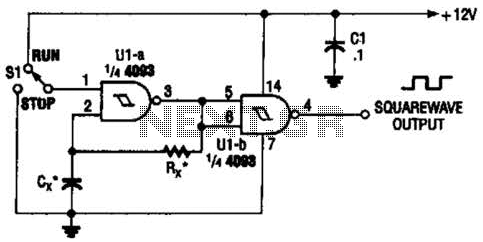D.A.(Tony)Stewart
Advanced Member level 7

- Joined
- Sep 26, 2007
- Messages
- 9,807
- Helped
- 1,854
- Reputation
- 3,709
- Reaction score
- 2,404
- Trophy points
- 1,413
- Location
- Richmond Hill, ON, Canada
- Activity points
- 62,974
I just read your thread from last year and saw the schematic.
The biggest problem is the Astable Multivibrator is incorrectly designed. http://www.zen22142.zen.co.uk/ronj/rt5.html
The Cap, C1 switches full scale Vcc on one side and the other side then exceeds the supply rail Vcc or Vdd since there is still a residual threshold voltage.
This then activates the internal overvoltage protection diodes which partially discharge the cap with excess current from the driver and can possibly blows the internal diode (fused open) which would alter the decay time and remove the protection..
This design is **not acceptable** for reliable operation in addition the risk of the above can trigger CMOS SCR latchup (shoothru catastrophic failure and fry the chip across the rails.)

A better Astable is as follows;

instead of the switch use your thermistor sensor with gate to act as the switch. ( several ways to do this)
The 74HC132; 74HCT132 is a quad 2-input NAND gate with Schmitt trigger inputs
The biggest problem is the Astable Multivibrator is incorrectly designed. http://www.zen22142.zen.co.uk/ronj/rt5.html
The Cap, C1 switches full scale Vcc on one side and the other side then exceeds the supply rail Vcc or Vdd since there is still a residual threshold voltage.
This then activates the internal overvoltage protection diodes which partially discharge the cap with excess current from the driver and can possibly blows the internal diode (fused open) which would alter the decay time and remove the protection..
This design is **not acceptable** for reliable operation in addition the risk of the above can trigger CMOS SCR latchup (shoothru catastrophic failure and fry the chip across the rails.)

A better Astable is as follows;

instead of the switch use your thermistor sensor with gate to act as the switch. ( several ways to do this)
The 74HC132; 74HCT132 is a quad 2-input NAND gate with Schmitt trigger inputs
Last edited:
